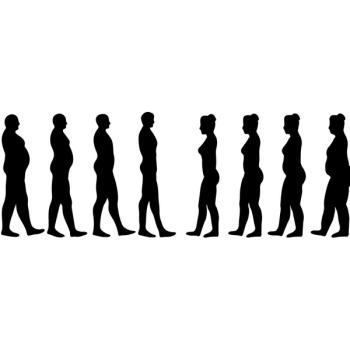A fatal cardio- or cerebrovascular event in some adult smokers may be the first manifestation of cardiovascular disease (CVD), according to findings published online today in the Journal of the American Heart Association (AHA).
Study authors found that across age groups studied (ages 20 to 79 years) a majority of the first CVD events were fatal or nonfatal myocardial infarction (MI).
While the association of cigarette smoking with premature death from cardiovascular and noncardiovascular disease is well established, investigators led by Sadiya S. Khan, MD, assistant professor of medicine in the division of cardiology at the Northwestern University Feinberg School of Medicine in Chicago, were interested in whether the risk associated with smoking is similar across subtypes of CVD (eg, fatal and nonfatal coronary heart disease, stroke, congestive heart failure).
“There is often more awareness and concern about cancer as a result of smoking than heart disease, so we wanted to better define the risks of smoking related to different types of cardiovascular disease and, most importantly, to cardiovascular death,” said Kahn in an AHA statement. “In our analysis, even after adjusting for deaths not related to the heart, such as those due to lung cancer, we found that fatal or non-fatal events related to cardiovascular disease are more likely to occur among people who smoke.”
To examine the association between smoking status and total CVD and CVD subtypes, Khan and colleagues pooled deidentified individual-level data from 9 long-term population cohort studies in the US that are part of the Lifetime Risk Pooling Project. Participants included were between ages 20 and 79 years and free of CVD at the beginning of the respective studies. Data were included from 1 examination for each cohort from participants who had available responses for self‐reported smoking status, available data on covariates, and at least 10 years of follow‐up
The final analysis sample numbered 106 165 adults of whom 50.4% were women, 16.2% were Black, and 50.1% self-reported as cigarette smokers.
Investigators stratified participants by sex, smoking status at index examination (yes or no as self-reported), and index age groups (young [aged 20-39 yrs] middle-aged [40-59 yrs], and older [60-79 yrs).
Estimates of the long-term risk of total CVD were made for each index group, authors explain, by calculating the rates of CVD death, MI, stroke, and heart failure (HF). The team calculated cumulative risk for CVD events and non‐CVD death by smoking status in age‐stratified and sex‐stratified analyses and determined the proportion of incident first events, in which the occurrence of 1 type of event (CVD event or non‐CVD death) precluded consideration of another event.
Among young adults, 20 to 39 years of age, the analysis found:
The risk for CVD started to increase significantly in young men who smoked near the 10-year follow-up mark, while in young women the increased risk among smokers became more evident near the 20-year follow-up mark.
For CVD subtypes, young men who smoked had the highest long-term risk for heart attacks (24%), while young women had the highest long-term risk (11.3%) for other CVD causes of death, such as stroke or heart failure.
RESULTS
The median follow-up time for study participants was 23 years, and ranged from 10 to 25 years.
Between those who smoked and those who did not, the largest differences in risks and in deaths occurred during middle age. The analysis found:
- Middle-aged women who smoked were nearly twice as likely as non-smoking women to have a fatal CVD event as their first sign of CVD.
- Middle-aged men who smoked had a 79% chance of having a fatal CVD event as their first sign of cardiovascular disease – about 1.5 times more likely compared to middle-aged men who did not smoke.
- For middle-aged women, the long-term rates of CVD risk were nearly 10% higher in those who smoked compared to those who didn’t (34.7% for smokers; 24.8% for non-smokers).
- Middle-aged men who smoked had a more than 10% higher long-term risk for cardiovascular disease then men who didn’t smoke (46% for smokers; 35.8% for men non-smokers).
- Smoking was associated with the development of cardiovascular disease at an earlier age, by 5 years in middle-aged men and nearly 4 years in middle-aged women. Similar results were seen in younger and older adults, so that a greater number of years lived without CVD was seen across all non-smoking participants in all age and sex groups.
Among all age groups, a majority of the first CVD events were fatal or nonfatal MI. A difference in the second-leading cause of first event emerged between younger and older age groups with fatal and nonfatal stroke observed in the young age group and HF the second‐leading cause in the middle‐aged and older age groups.
“Our findings note that preventing a heart attack, stroke or heart failure is vital, yet preventing unexpected sudden death as the first manifestation of cardiovascular disease is clearly a priority," said Kahn in the statement. "Another notable finding among people who smoked was the early onset of CVD...There’s not a lot of research on young adults who smoke, particularly among young men. Our study adds important perspective.”
Reference: Khan SS, Ning H, Sinha A, et al. Cigarette smoking and competing risk factors for fatal and nonfatal cardiovascular disease subtypes across the life course. J Am Heart Assoc. 2021;0:e021751. Published online ahead of print https://doi.org/10.1161/JAHA.121.021751

















































































































































































































































































